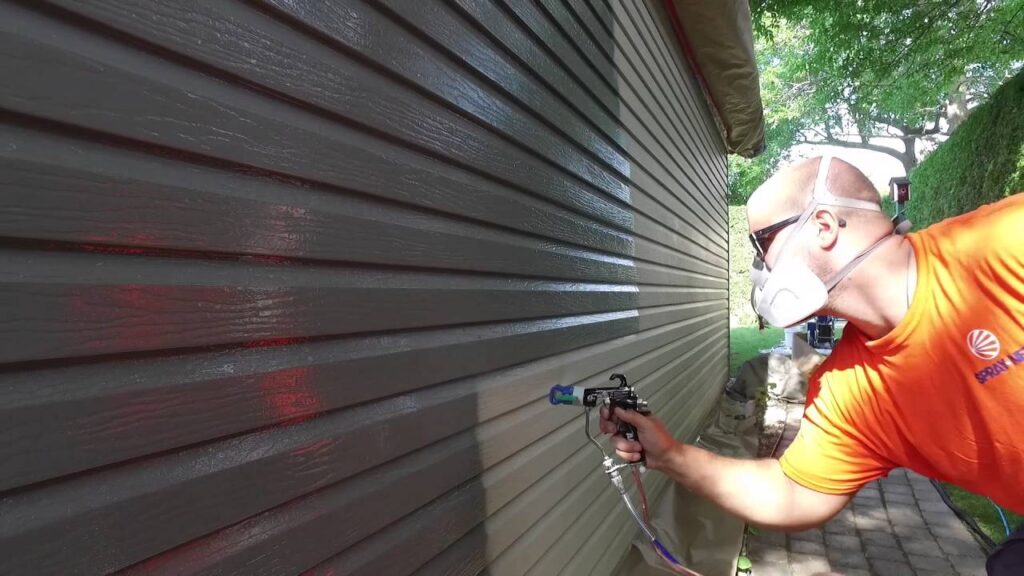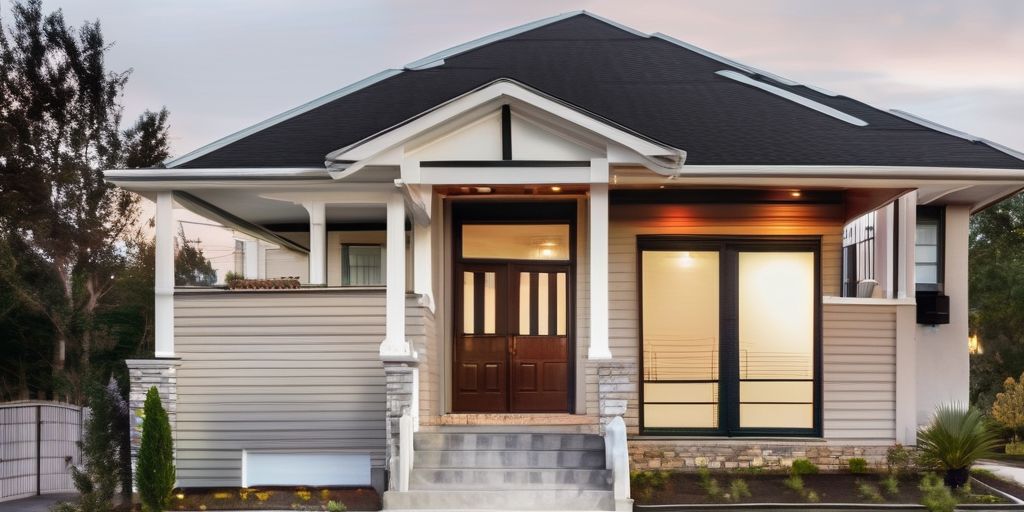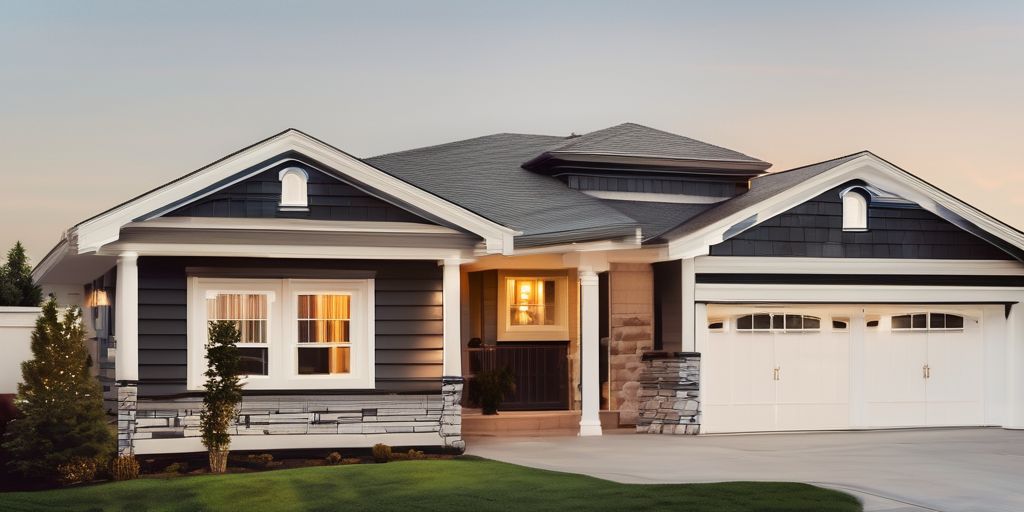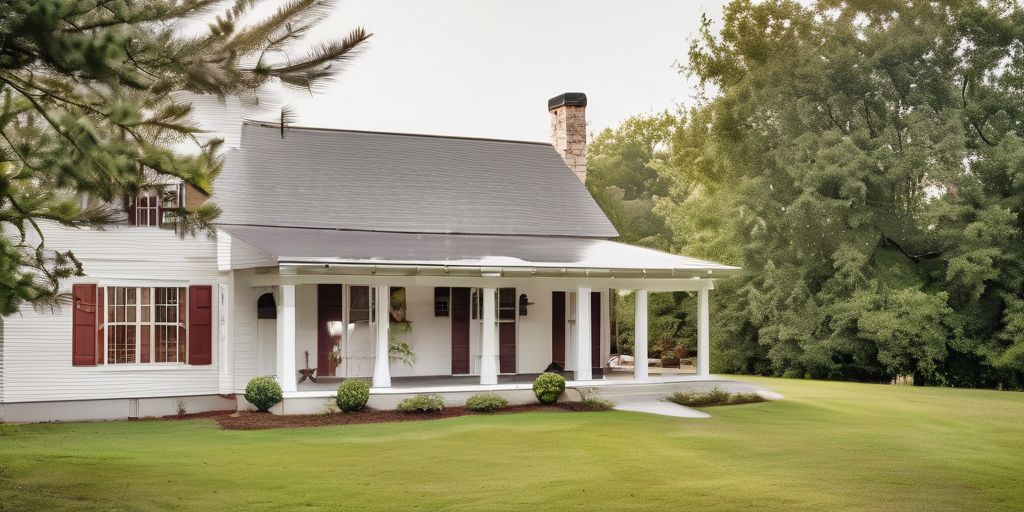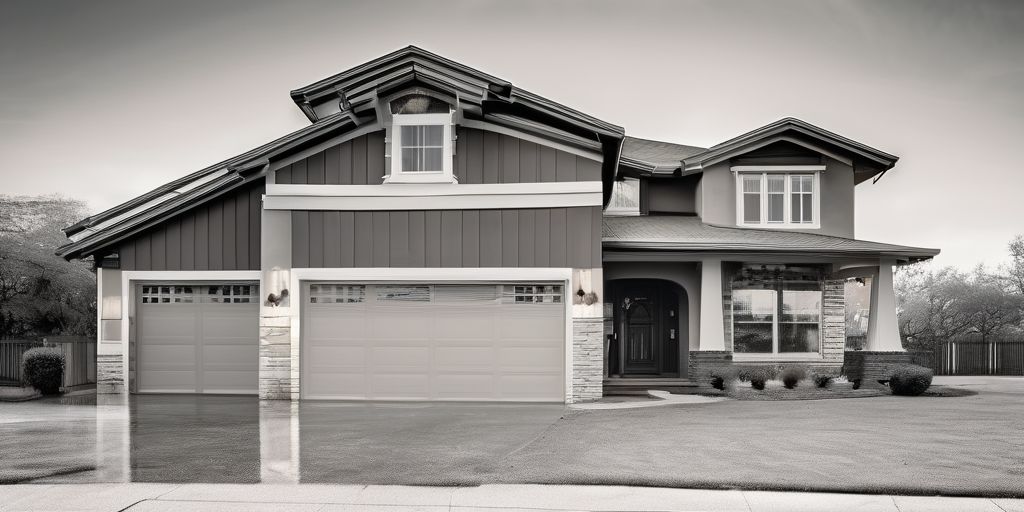Selecting the right spray painting equipment is crucial for achieving a professional finish, whether for residential or commercial projects in Oakville. This article explores various aspects of spray painting equipment, from understanding different types to maintaining and safely operating them. We’ll also delve into when it’s best to hire a professional painting service in Oakville and provide guidance on purchasing or renting equipment, incorporating local industry insights.
Key Takeaways
- Understanding the different types of spray painters and their respective pros and cons can significantly impact the quality and efficiency of your painting project.
- Choosing the correct nozzle and tip size, along with the appropriate pressure settings, is essential for optimal paint application and finish.
- Regular maintenance and adherence to safety protocols are critical for the longevity of spray painting equipment and the safety of operators.
- Local options for buying or renting spray painting equipment are abundant in Oakville and surrounding areas, with cost and support being key factors in the decision-making process.
Understanding Spray Painting Equipment Options
Types of Spray Painters: Pros and Cons
When selecting spray painting equipment, it’s crucial to understand the various types available and their respective advantages and disadvantages. Airless spray painters, for instance, are known for their ability to cover large areas quickly and with a high-quality finish. However, they may not be the best choice for projects that require intricate detail work.
HVLP (High Volume Low Pressure) spray painters are another popular option, especially for tasks that demand precision. They use a lower pressure to atomize the paint, which reduces overspray and waste. On the downside, HVLP systems typically have a slower application rate compared to airless systems.
Here’s a quick overview of the pros and cons:
- Airless Spray Painters
- Pros: Fast application, good coverage, works with a variety of coatings
- Cons: Less control over fine details, potential for overspray
- HVLP Spray Painters
- Pros: Greater precision, reduced overspray, better for detailed work
- Cons: Slower application, may require thinning of paint
For those working on projects in Oakville, consider the local climate and environment. The proximity to Lake Ontario may influence your choice of equipment due to the potential for higher humidity levels.
It’s essential to match the type of spray painter to the specific requirements of your project to achieve the best results.
Selecting the Right Nozzle and Tip Size
Selecting the appropriate nozzle and tip size is crucial for achieving the desired finish and efficiency in spray painting tasks. Here are some key considerations:
- The material being sprayed determines the nozzle size. Thicker materials require larger nozzles, while thinner materials work best with smaller nozzles.
- The surface area to be covered influences the tip size. Larger tips cover more area but may result in a less detailed finish.
- Match the tip size to the paint’s viscosity for optimal atomization and flow.
It’s essential to balance the nozzle and tip size with the pressure settings to avoid overspray and ensure a smooth, even coat.
Remember, the right combination of nozzle and tip size can significantly impact the quality of your spray painting project. Here’s a simple guide to help you choose:
- Identify the type of paint or coating you will be using.
- Consider the surface area and level of detail required.
- Select a nozzle and tip that correspond to the paint’s viscosity and your coverage needs.
While Oakville’s climate can influence paint selection and application techniques, the principles of nozzle and tip selection remain consistent.
The Importance of Pressure Settings
Understanding the correct pressure settings for your spray painting equipment is crucial for achieving a flawless finish. Proper pressure settings ensure that the paint is atomized effectively, which is essential for a smooth and even coat. Here are some key points to consider:
- Consistency: Maintaining consistent pressure is vital for uniform paint application.
- Atomization: At the right pressure, paint particles are finely dispersed, leading to a better finish.
- Overspray: Incorrect pressure can cause excessive overspray, wasting paint and potentially damaging surrounding areas.
It’s important to note that different surfaces and paint types may require unique pressure settings. For example, a delicate surface or a thinner paint might need lower pressure to avoid damage or running. Conversely, thicker paints or larger surfaces could necessitate higher pressure for adequate coverage.
Remember, always test your pressure settings on a small, inconspicuous area before starting the main project to ensure the desired outcome.
Adjusting the pressure on your spray painting equipment might seem daunting, but it’s a simple process that can significantly impact the quality of your work. Here’s a basic guide to get you started:
- Start with the manufacturer’s recommended pressure setting.
- Test the spray pattern on cardboard or scrap material.
- Adjust the pressure incrementally until you achieve the desired atomization.
- Re-test as necessary, especially when changing paint types or surfaces.
While Oakville’s serene Bronte Creek Provincial Park isn’t a place for spray painting, the tranquility it offers can be a great source of inspiration for your color choices and design ideas.
Factors to Consider for Residential and Commercial Projects
Differences in Equipment for Interior vs. Exterior Jobs
Selecting the appropriate spray painting equipment is crucial for achieving optimal results, whether you’re working on an interior or exterior project. The choice of equipment can significantly impact the finish and durability of the paint job.
For interior jobs, it’s essential to consider the ventilation and space constraints. Equipment with lower pressure settings and smaller nozzles are often preferred to minimize overspray and ensure a smooth finish on delicate surfaces.
- Interior considerations:
- Ventilation management
- Space limitations
- Lower pressure settings
- Smaller nozzle sizes
Exterior painting, on the other hand, may require more robust equipment capable of handling larger surfaces and variable weather conditions. High-pressure sprayers and larger nozzles can cover more area efficiently, but it’s important to calibrate the equipment to avoid paint wastage and ensure even coverage.
- Exterior considerations:
- Weather resistance
- Larger surface coverage
- High-pressure sprayers
- Equipment calibration
While both interior and exterior painting demand precision and care, the equipment selected must be tailored to the specific challenges and requirements of the job at hand.
In the Oakville area, where landmarks like the Bronte Creek Provincial Park provide a picturesque backdrop, the right equipment will ensure that both the natural beauty and the architectural integrity are complemented by a professional-quality paint job.
Choosing Equipment for Large-Scale Commercial Tasks
When selecting equipment for large-scale commercial tasks, it’s crucial to consider the specific demands of the project. High-volume, low-pressure (HVLP) sprayers are often recommended for their efficiency and ability to cover large areas quickly while minimizing overspray.
Types of Surfaces to Paint:
- Steel building and factory walls
- Large industrial and manufacturing plants
- Exterior surfaces of bridges and machinery
For each surface type, the choice of nozzle and tip size is critical to achieve the desired finish. A larger tip size may be necessary for thicker, industrial coatings, while a finer tip is suitable for detailed work on office interiors.
Pressure Settings and Volume:
- High pressure for penetrating porous surfaces
- Lower pressure for controlled application on delicate surfaces
It’s also important to consider the durability of the equipment. Commercial tasks often require machinery that can withstand continuous use and harsh conditions. Equipment with robust construction and easy maintenance features will ensure longevity and consistent performance.
In the context of Oakville, where commercial projects may include landmarks like the Oakville Centre for the Performing Arts, the right spray painting equipment can make a significant difference in both efficiency and outcome.
Tailoring Your Selection for Residential Detail Work
When selecting spray painting equipment for residential detail work, it’s essential to consider the intricacies of the job at hand. Choosing the right tools can make a significant difference in the quality and efficiency of your painting project.
- Nozzle and tip size should be matched to the scale of the work; smaller nozzles for fine detail and larger ones for broad surfaces.
- The type of paint and the surface being painted will influence the pressure settings required.
- For intricate patterns or edges, a steady hand and precision equipment are paramount.
It’s important to remember that residential painting often involves working in smaller, more confined spaces compared to commercial projects. This necessitates equipment that is not only effective but also compact and easy to maneuver.
In Oakville, where the climate can affect painting conditions, local experts are attuned to selecting the appropriate equipment that can handle the variability in temperature and humidity. This ensures a high-quality finish that meets client expectations.
Lastly, consider the cleanup process. Equipment that is easy to clean will save time and maintain the longevity of your tools, ensuring they are ready for the next project.
The Role of Professional Painting Services in Oakville
When to Hire a Professional Painting Contractor
Deciding when to hire a professional painting contractor can be a pivotal choice for both the outcome and the experience of your painting project. Here are some scenarios where seeking professional help is advisable:
- Complexity of the project: If the job involves hard-to-reach areas, intricate details, or requires special finishes, a professional’s expertise is invaluable.
- Exterior painter needs: Due to the exposure to weather and the need for specific techniques, hiring an exterior painter is often the best route for outdoor projects.
- Time constraints: When a project needs to be completed within a tight schedule, professionals can ensure timely completion without sacrificing quality.
- Safety concerns: Professionals are trained to handle heights and hazardous materials, reducing the risk of accidents.
It’s essential to weigh the benefits of a professional’s skill set against the cost and scope of the project. While DIY can be rewarding, certain tasks are best left to those with the experience and equipment to do the job safely and effectively.
In Oakville, where the charm of the historic Oakville Lighthouse beckons, maintaining the aesthetic of your property with a quality paint job is especially important. Whether it’s a residential touch-up or a full commercial repaint, consider the points above to make an informed decision.
Benefits of Local Expertise in Oakville and Burlington
Local expertise in spray painting is invaluable, particularly when it comes to the nuances of regional architecture and climate. Professionals in Oakville and Burlington have a deep understanding of the local environment, which translates into better preparation and application techniques for lasting results. For instance, the knowledge of how humidity affects drying times can be crucial for a successful paint job.
- Familiarity with local building materials ensures the correct type of paint and application method is used.
- Awareness of seasonal weather patterns aids in planning the optimal time for exterior projects.
Local painters are adept at refining spray painting skills for specific tasks such as window frames, which require precision and efficiency.
In addition, having a professional with local expertise means they are well-versed in the regulations and standards specific to Oakville and Burlington. This ensures compliance with local building codes and environmental guidelines. Whether it’s a commercial or residential project, the benefits of hiring a local expert are clear: they bring a level of detail and commitment to quality that is hard to match.
Showcasing Local Projects: A Portfolio Review
When considering spray painting services, reviewing a portfolio of local projects can provide valuable insights into the quality and scope of work you can expect. A portfolio demonstrates the versatility of techniques and the attention to detail that a service provider brings to different types of projects.
- Insights on application methods are crucial for understanding how a project’s finish was achieved.
- Preparation steps ensure the longevity of the paint job.
- Maintenance tips help in preserving the aesthetic appeal over time.
While specific case studies or projects are not mentioned, it’s important to note that Oakville’s aluminum and vinyl siding painting services are often sought after for their durability and finish. The application of these services can vary based on the material and the desired outcome.
The selection of the right spray painting equipment is pivotal in achieving a stunning finish and ensuring the paint adheres properly to different surfaces.
If you’re in the Oakville area, you might recognize some of the landmarks that have benefited from these services. The expertise required to handle such diverse projects is indicative of a service provider’s capability to tackle both residential and commercial tasks.
Maintenance and Safety Tips for Spray Painting
Routine Equipment Cleaning and Care
Maintaining your spray painting equipment is crucial for ensuring consistent performance and longevity. Proper post-spray painting cleanup is not only essential for safety but also impacts the quality of your results. Here are some steps to follow:
- Prepare your equipment by testing the spray pattern and adjusting settings as necessary before starting your project.
- After use, thoroughly clean the nozzles to prevent clogging and ensure a neat finish.
- Dispose of any hazardous materials according to local regulations in Oakville.
- Always choose the appropriate protective gear to safeguard against potential hazards.
It’s important to familiarize yourself with your equipment’s maintenance needs. Regular care includes:
- Inspecting and cleaning the spray gun after each use.
- Checking for any wear and tear on hoses and seals.
- Storing equipment in a dry, safe place to avoid rust and damage.
By adhering to these maintenance practices, you can extend the life of your spray painting equipment and maintain a high standard of workmanship.
Safety Protocols for Spray Painting
When handling spray painting equipment, safety should always be a top priority. Proper training is crucial to ensure that all users understand how to operate the equipment safely and are aware of the potential hazards. Here are some key safety protocols to follow:
- Always wear the appropriate personal protective equipment (PPE), including masks, gloves, and goggles.
- Ensure the work area is well-ventilated to avoid the inhalation of fumes.
- Keep spray painting equipment clean and well-maintained to prevent malfunctions.
- Be aware of the surroundings and cover any areas that need protection from overspray.
It’s essential to recognize the power of high-pressure spray painting equipment and respect the safety measures that accompany its use.
Additionally, it’s important to be familiar with the local regulations regarding spray painting, as these can vary by region. For instance, in Oakville, adherence to municipal bylaws concerning environmental and noise control is mandatory. By following these guidelines, you can ensure a safer environment for both workers and the community.
Troubleshooting Common Spray Painting Issues
When tackling a spray painting project, encountering issues can be frustrating. However, with a bit of knowledge and the right approach, most problems can be resolved efficiently. Here are some common challenges and tips on how to address them:
- Clogging: If the paint is not flowing smoothly, the nozzle or tip might be clogged. First, try cleaning the nozzle with an appropriate solvent. If the issue persists, check for dried paint inside the equipment and clean it thoroughly.
- Paint runs or sags: These are often caused by applying too much paint or working in conditions that are too hot or cold. To prevent this, apply paint in thin, even layers and allow sufficient drying time between coats.
- Inconsistent spray pattern: This can be due to several factors, including incorrect pressure settings or a damaged nozzle. Adjust the pressure according to the manufacturer’s recommendations and inspect the nozzle for any signs of wear or damage.
Remember, patience and practice are key to mastering the art of spray painting. Don’t rush the process, and take the time to understand your equipment and materials.
For those in Oakville, being familiar with local weather conditions, such as the humidity near Lake Ontario, can also play a role in achieving the best results. Always test your equipment and technique on a small, inconspicuous area before beginning the main project.
Navigating the Purchase and Rental of Painting Equipment
Where to Buy or Rent in Oakville and Surrounding Areas
When considering where to purchase or rent spray painting equipment in Oakville, it’s essential to weigh your options carefully. Here’s a quick guide to help you navigate the local landscape:
- Research local suppliers: Start by looking up suppliers in the Oakville area. Online directories and forums can be a good starting point to find businesses that cater to your needs.
- Evaluate the inventory: Check if the supplier has a diverse range of equipment that suits both residential and commercial projects.
- Consider proximity: If you need quick access to equipment or fast service, choosing a supplier close to your location can be beneficial. For instance, being near the iconic Oakville Harbour can provide a scenic route for pick-ups or deliveries.
Remember, the right supplier will not only offer a variety of equipment but also provide guidance on the best choices for your specific project.
- Assess customer service: Good customer service is crucial, especially if you require support or training as a first-time user.
- Compare prices: Look at the rental and purchase costs from different suppliers to ensure you get the best deal.
By taking these steps, you’ll be well on your way to securing the spray painting equipment that meets your project’s demands in Oakville and beyond.
Cost Considerations: Buying vs. Renting
When deciding between purchasing and renting spray painting equipment, it’s essential to weigh the long-term and short-term financial implications. Buying equipment may be more cost-effective in the long run for frequent users, as it eliminates recurring rental fees. However, renting can be a more affordable option for one-time or infrequent projects.
- Buying:
- No recurring costs
- Potential for higher upfront investment
- Ownership and asset value
- Renting:
- Lower initial expense
- Flexibility to choose the latest models
- No maintenance or storage concerns
It’s important to consider the duration and frequency of your projects when evaluating costs. For instance, a one-time exterior job in Oakville might benefit from renting, while ongoing interior work could justify the purchase of equipment.
Remember, the choice between buying and renting also depends on factors such as the availability of storage space, the need for the latest technology, and the scale of the projects you undertake. Careful consideration of these aspects will guide you to the most financially prudent decision.
Support and Training for First-Time Users
Embarking on a spray painting project can be daunting for first-time users. Proper support and training are essential to ensure a successful outcome. Here are some steps to consider:
- Familiarize yourself with the equipment: Before starting your project, take the time to understand how your spray painting equipment works. This includes assembling and disassembling the parts, as well as knowing how to adjust the pressure settings.
- Seek out training resources: Many local hardware stores offer workshops or online tutorials that can help you get started. Look for resources that cover the basics of spray painting techniques and safety protocols.
- Practice makes perfect: Before tackling your main project, practice on a smaller scale or on a less visible area. This will help you get comfortable with the equipment and refine your technique.
Remember, patience and careful preparation will go a long way in achieving a professional-looking finish.
For those in the Oakville area, consider visiting local landmarks such as the Bronte Heritage Waterfront Park for inspiration on color schemes and design ideas. While there, take the opportunity to observe the effects of different lighting conditions on paintwork.
When it comes to enhancing the exterior of your home, the right painting equipment can make all the difference. At We Paint Siding, we offer a comprehensive range of painting services tailored to meet your specific needs, whether it’s for aluminum siding, vinyl siding, or any other surface. Our experienced team ensures a flawless finish with our specialized spray-painting method, backed by a 10-Year Guarantee. Don’t settle for less; visit our website to book a free estimate and transform your home’s appearance with professional results. Elevate your curb appeal with We Paint Siding today!
Conclusion
In conclusion, selecting the right spray painting equipment in Oakville is crucial for achieving professional and lasting results, whether for residential or commercial projects. With a variety of services available, from interior and exterior painting to specialized tasks like staircase painting and deck staining, it’s important to choose a company that aligns with your specific needs. Remember to consider the expertise of local contractors and the range of services they offer when making your decision. With the right team and equipment, your painting project in Oakville will be a resounding success.
Frequently Asked Questions
What are the main types of spray painting equipment available in Oakville?
In Oakville, the main types of spray painting equipment include airless sprayers, HVLP (High Volume Low Pressure) sprayers, and conventional compressed air sprayers. Each type has its pros and cons depending on the job’s size, the type of paint used, and the desired finish.
How do I select the right nozzle and tip size for my spray painting project?
The right nozzle and tip size depend on the type of paint you’re using and the surface you’re painting. Thinner paints like stains require a smaller tip, while thicker paints like latex require a larger tip. It’s essential to consult the paint manufacturer’s recommendations and consider the surface area and intricacy of the project.
Why are pressure settings important in spray painting?
Pressure settings are crucial because they affect the paint’s atomization and the overall finish. Too low pressure can result in an uneven spray pattern, while too high pressure can cause overspray and waste paint. Properly adjusting the pressure ensures a smooth, consistent finish and efficient use of paint.
Should I buy or rent spray painting equipment for my project in Oakville?
The decision to buy or rent depends on the frequency of your painting projects and budget. Buying equipment makes sense for professionals or those who paint regularly. Renting can be more cost-effective for one-time or infrequent projects. Check local Oakville and Burlington stores for options.
When should I consider hiring a professional painting contractor in Oakville?
Consider hiring a professional if the project is large-scale, requires specialized equipment, or you desire a high-quality finish. Professional contractors have the experience and tools to complete the job efficiently and with high-quality results, especially in areas like Oakville and Burlington where local expertise is valuable.
How do I maintain my spray painting equipment to ensure longevity and safety?
Regular cleaning after each use is essential to prevent paint buildup and clogs. Follow the manufacturer’s guidelines for cleaning and storing the equipment. Always wear appropriate safety gear, such as masks and gloves, and be aware of your surroundings to prevent accidents. Regular maintenance checks are also recommended to identify any wear or potential issues.

